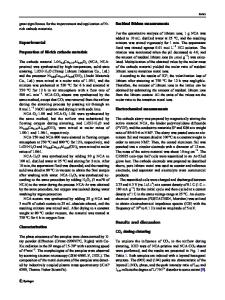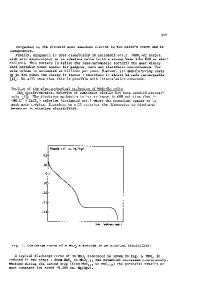A review of cathode materials in lithium-sulfur batteries
- PDF / 2,738,729 Bytes
- 20 Pages / 595.276 x 790.866 pts Page_size
- 103 Downloads / 383 Views
REVIEW
A review of cathode materials in lithium-sulfur batteries Liwen Yang 1 & Qian Li 1 & Yang Wang 1 & Yanxiao Chen 1 & Xiaodong Guo 1 & Zhenguo Wu 1 & Guang Chen 2 & Benhe Zhong 1 & Wei Xiang 3 & Yanjun Zhong 1 Received: 29 July 2020 / Revised: 30 August 2020 / Accepted: 1 September 2020 # Springer-Verlag GmbH Germany, part of Springer Nature 2020
Abstract Lithium-sulfur battery, one of the most prominent and widely studied batteries, takes sulfur as the cathode which has rich reserves in the earth. It has the characteristics of high energy density, high theoretical specific capacity, affordable cost, and environmentfriendly. Although this system has many advantages, it has many essential shortcomings, such as the non-conductivity of active materials and discharge intermediates, shuttle effect, the volume effect of the sulfur cathode, and the dendritic growth of lithium. In this paper, we summarize the solutions and related research of cathode materials in the lithium-sulfur battery from three aspects: the improvement of conductivity, the alleviation of the shuttle effect, and the use of Li2S cathode. And put forward the suggestions and prospects for future improvement methods. Keywords Lithium-sulfur battery . Cathode materials . Shuttle effect . Sulfur hosts
Introduction With the development of the times, the energy demand is increasingly severe. These new demands require that the energy density of the battery system is much higher than the currently available energy density, which will inevitably lead to the traditional lithium-ion battery technology that can no longer meet the demand [1, 2]. One of the most promising solutions is lithium-sulfur battery (Li-S battery), which offers various advantages, such as high energy density, high theoretical specific capacity, affordable cost, and environmentfriendly [3–6]. The concept of the lithium-sulfur battery can
* Yanxiao Chen [email protected] 1
School of Chemical Engineering, Sichuan University, No. 24 South Section 1, Yihuan Road, Chengdu 610065, China
2
College of Chemistry, Chemical Engineering and Materials Science, Key Laboratory of Molecular and Nano Probes, Ministry of Education, Collaborative Innovation Center of Functionalized Probes for Chemical Imaging in Universities of Shandong, Institutes of Biomedical Sciences, Shandong Normal University, Jinan 250014, People’s Republic of China
3
College of Materials and Chemistry &Chemical Engineering, Chengdu University of Technology, Chengdu 610059, People’s Republic of China
be traced back to the 1960s [7–9]. At that time, the problems of active material insulation and polysulfide dissolution could not be solved, and there was no suitable electrolyte to match it, so systematic research could not be carried out [10]. Until 2009, Nazar’s team [11] reported that the ordered porous carbon/sulfur (CMK-3/S) composite positive electrode could significantly improve the electrochemical performance of the lithium-sulfur battery. The research of lithium-sulfur battery has received widespread attention again,
Data Loading...











